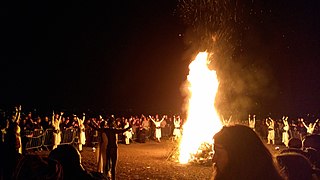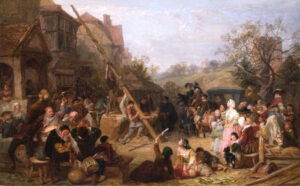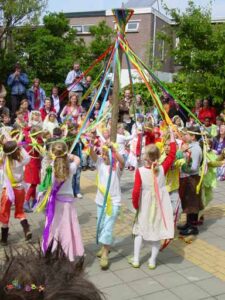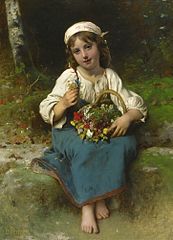
The Celts believed that the time we define as May Day was midway between the Winter and Summer Solstice when darkness turned to light. They celebrated the return of fertility to the world with a festival called Beltane. Rituals protected sprouting crops and livestock returning to summer pastures.

As customs changed, May celebrations turned into a party. People harvested Maypoles from the woods, erected them in the village, and decorated them with garlands of flowers. The first Maypoles may have been fertility symbols with the pole representing male fertility and the baskets and wreaths symbolizing females.

There was also dancing around the Maypole. Young lads and lasses danced and socialized. If a couple paired up at sundown, courtship ensued, and the young people married on Midsummer Day in June. The practice remains with us in the popularity of June weddings.

Maypole dancing never became a popular American activity, but May Baskets caught on. Participants created baskets with flowers, candy, and other treats – perhaps a kitten?
The person giving the May Basket hung it on a front door, knocked on the door, yelled May Basket!, and ran away. If the recipient caught the giver, he or she was entitled to a kiss. This custom was most popular among children and sweethearts.
May is a magical month. The weather is warm but not stifling. Flowers bloom. When I taught, May meant the teaching year was almost over, and long summer days beckoned. In May, anything is possible.
So, celebrate May Day as you think best – with a song, or a dance, or even a Maypole – to recognize that the dark days are over for another season.
💐💐💐

Illustrations
Bonfire at 2019 Beltane Fire Festival in Edinburgh by Nyri0
Raising the Maypole, 1855, by Frederick Goodall
Dancing Around the Maypole. Photo by Joep Zander at Dutch Wikipedia
A Basket of Cats by Leon Huber
Young Girl with Basket of Flowers by Leon Bazille Perrault

Sandra Wagner-Wright holds the doctoral degree in history and taught women’s and global history at the University of Hawai`i. Sandra travels for her research, most recently to Salem, Massachusetts, the setting of her new Salem Stories series. She also enjoys traveling for new experiences. Recent trips include Antarctica and a river cruise on the Rhine from Amsterdam to Basel.
Sandra particularly likes writing about strong women who make a difference. She lives in Hilo, Hawai`i with her family and writes a blog relating to history, travel, and the idiosyncrasies of life.

